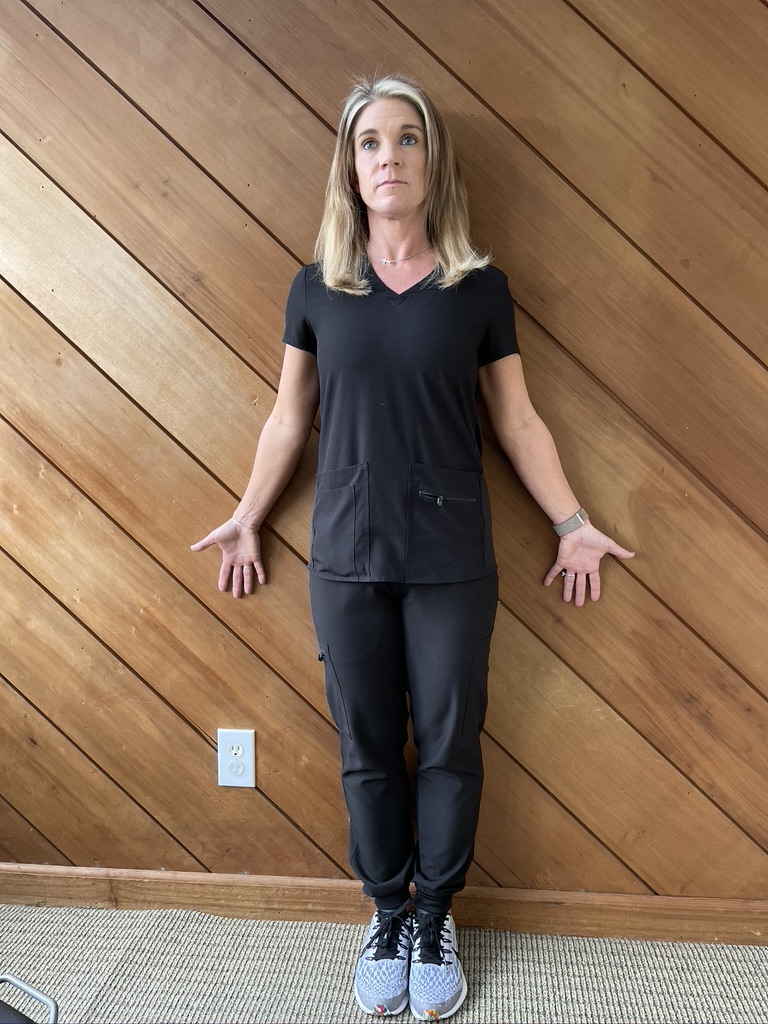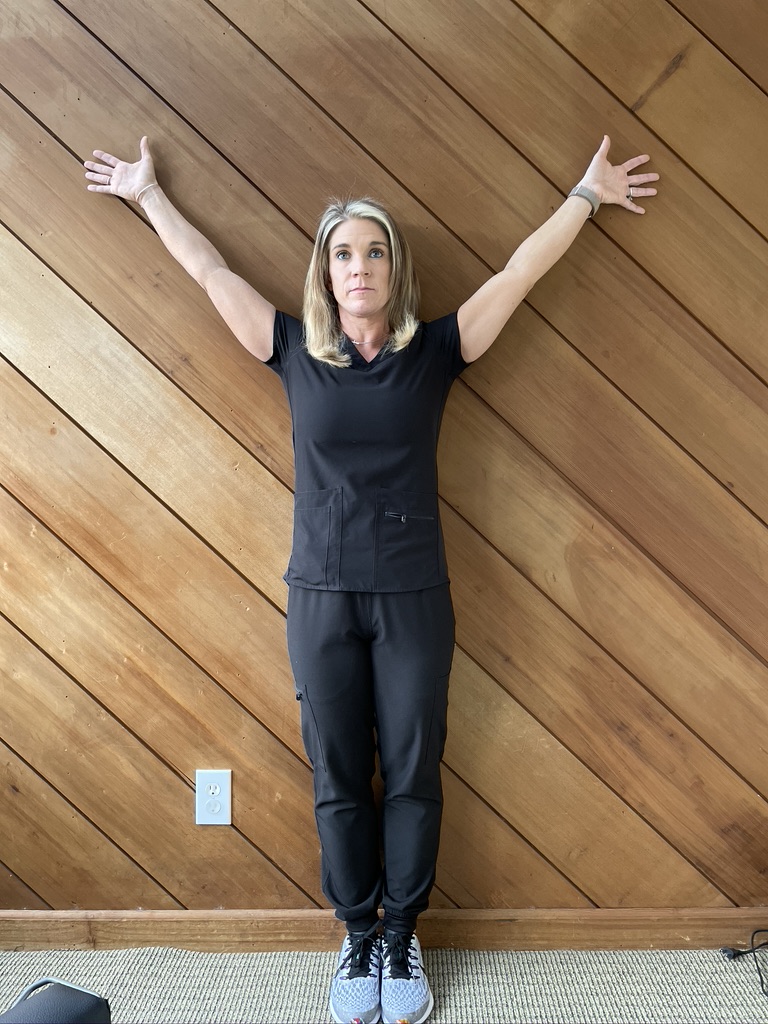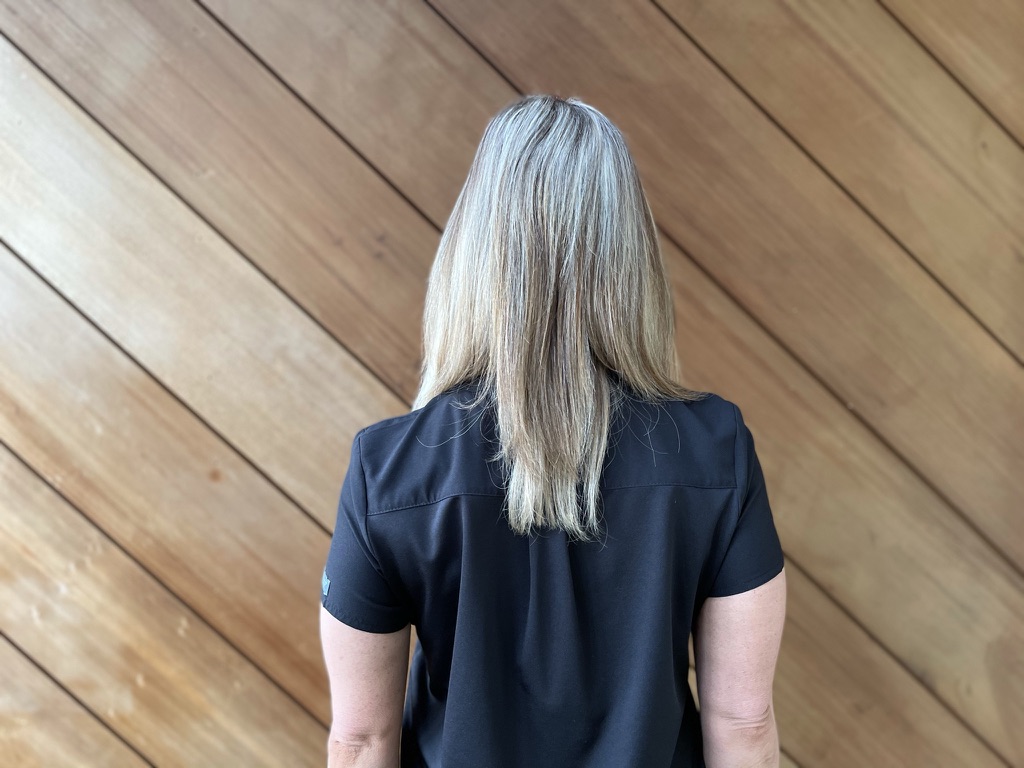Is your bed your new office? The kitchen table your new conference table? A coffee table your new desk? If so, you are not alone! More than 41% of all working Americans are now working from home–and will continue to do so through 2021–and a majority are experiencing neck, back, and shoulder pain as a result. Continue reading to learn the top work from home pain relief tips from Dr. Jeff Manning, owner of Manning Wellness Clinic.
Don’t get us wrong, working from home definitely has advantages like comfortable clothing (the “athleisure” clothing industry is booming!), constant access to coffee, tea or snacks, time with pets, the ability to open a window….But those perks are coming with the downside of new aches and pains.
“We’ve been fortunate to consistently treat patients once stay-at-home orders were lifted, and we have definitely been seeing an increase in work-from-home pain: lower back pain, neck pain, shoulder pain, and wrist and hand pain. When we talk with patients, the common thread is working from home, and not always under ideal conditions,” says chiropractor, Dr. Jeff Manning.
Dr. Jeff Manning, founder of Manning Wellness Clinic, a top-rated Chiropractic clinic in Dallas, Texas, offers the following tips to help combat work from home (and school from home) pain:
The Best Work from Home Pain Relief Tips from Manning Wellness Clinic
1. Support your low back to relieve work from home pain
You can purchase lots of low back support pillows online, but there’s a free option too: Simply roll up a bath towel or sweatshirt into a tube form. Place this horizontally in the small of your low back while you are sitting on a chair. You’ll need to sit straighter to keep the roll in place, which will keep you from slouching. Better posture means less lower back pain.
2. Pay attention to your work from home set-up
- The middle of your computer screen should be at eye level. Use books to raise your computer to a height that works. Since many of us use laptops, that means you may need to get a wireless keyboard and mouse. The cost has come way down on these (many are available in the $20 range) but it’s so well worth the small investment to protect your spine. Also, try to keep the screen about an arm’s length away.
- Pay attention to the height of your desk or work surface (kitchen counters included); check yourself and make sure that you’re not shrugging your shoulders to reach the keyboard. The key really is to be aware of what your body is doing.
3. Don’t forget to move!
- Try to move at least once per hour. Set an alert on your phone (since we tend to go down the rabbit hole and spend hours sitting at the computer). Stand up, walk around, grab a snack, do a few jumping jacks…anything to move a little.
4. Do posture-specific exercises
- Wall angels: Use a flat wall in your house. Stand with your heels against the wall–barefoot is best. Press your entire body gently against the wall. With arms by your side (the back of your hands and forearms should be facing and pressing against the wall; palms facing away) slowly raise your arms snow-angel style while keeping the backs of your forearms and hands grazing the wall. Raise so that your arms form a V from your shoulders, then lower to starting. If you can’t raise all the way up, go as far as you can while maintaining the correct form. It’s ok to have a small arch in your back, but don’t let your lower back get too far away from the wall. Raise and lower 10-15 times. Repeat 2-3 times per day.


- Double Chin tucks: Slide your chin straight back toward your face. Your chin should not move down toward your chest and your head should not move up or down. The motion is as if you are making a “double chin.” Hold for three seconds and return your chin to a neutral position. Perform 7-15 repetitions. Aim to do this exercise 1-2 times a day.


- Shoulder blade squeezes: While standing or sitting at your desk, squeeze your shoulder blades together gently without raising your shoulders. You should feel this in the mid to low shoulder blades. Hold the squeeze for 3-5 seconds and repeat 7-15 times. This can be done 1-2 times a day.


Get adjusted!
Regular chiropractic care, “maintenance care”, is also one of the best defenses to combat work from home pain. Even if you’ve never been to a chiropractor before, now is a perfect time to start. Give us a call at 214-720-2225 or click here to request an appointment.





